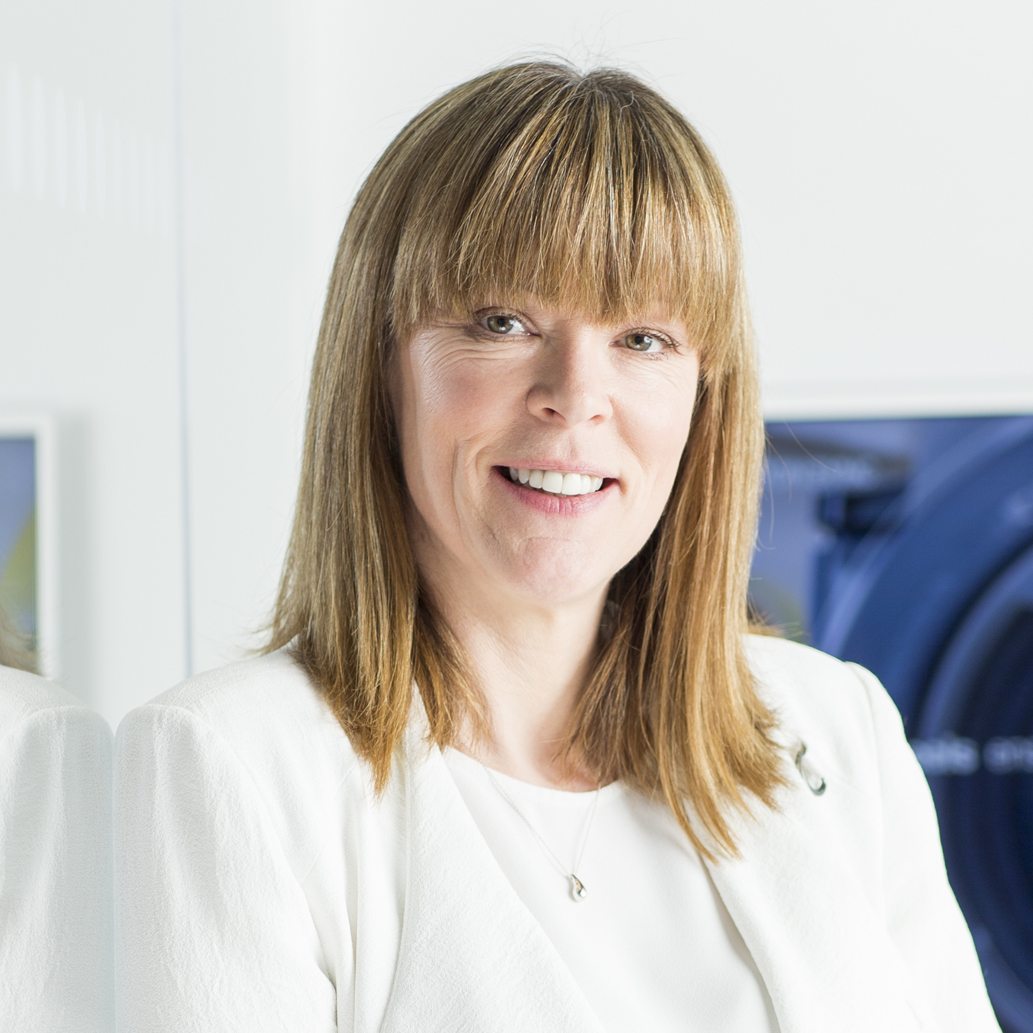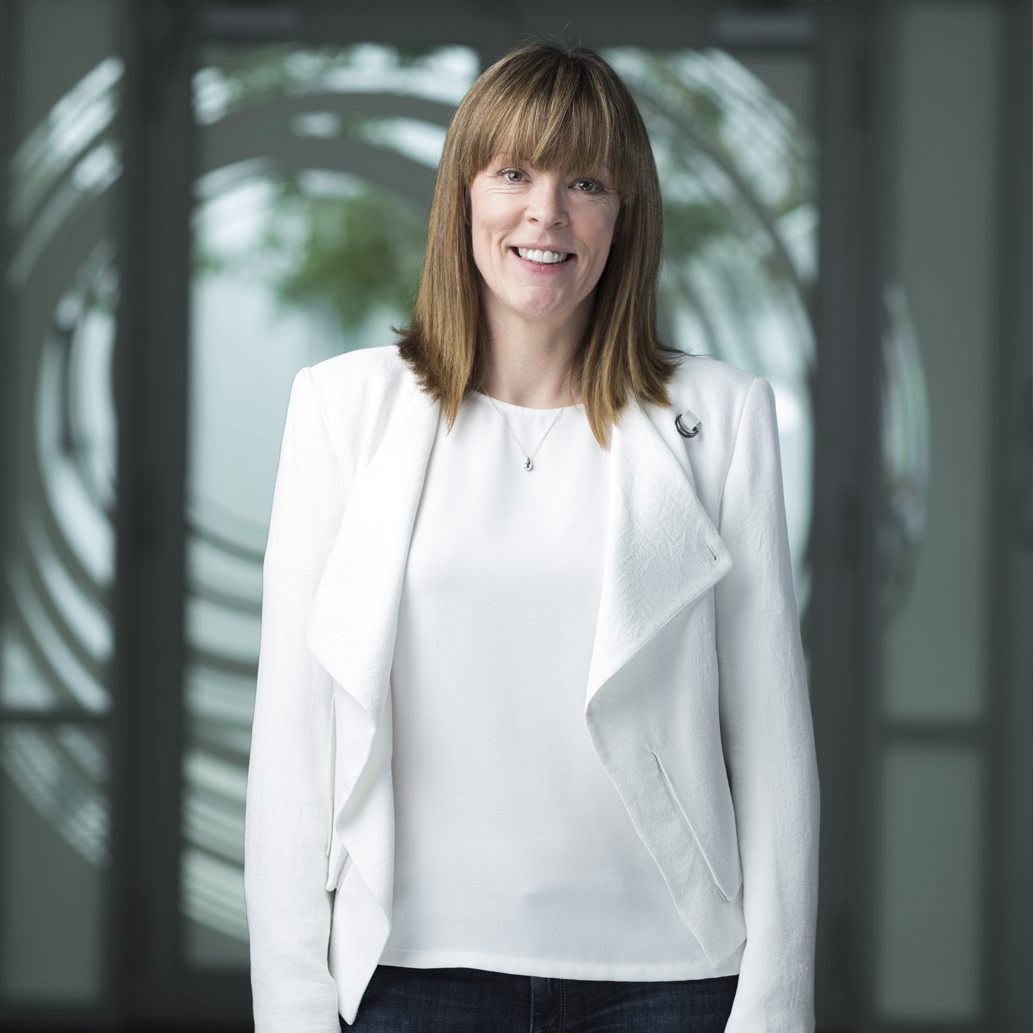Tess, give us an idea about your early life and career.
I finished university and in terms of career direction, I was weighing up some options, although HR wasn’t on my mind at all. I started temping, as I thought I had best start reducing the student loan, and joined an executive search firm. This was before the web played any sort of role in recruitment, and so it was the traditional, interview, paper chase and research environment, and I quickly realised that the research aspect of the role was hugely engaging. I guess I showed a level of ability in the role as I was quickly offered the opportunity of moving into a consultant role and this really opened up the human resources side of things to me, the aspirations of candidates and achieving the best outcomes for all. Looking back, recruitment is a great route into HR, it really is front of house, and even today, I take a real interest in the recruitment at Samsung, although of course much of the process has been enhanced by technology, it really has changed beyond all recognition from when I started this first role was with a small recruitment company called Goodman Graham that had been set up by two people (Andrew Goodman and Michael Lurie) to provide a highly focused service in the high tech sector, pretty much the first of its kind. As it was a small set up, it really was all hands on deck. It was a sharp learning curve and a lot of responsibility in a rapidly moving and changing sector, pre-bubble, so it was pretty busy. Clients were growing very fast and required candidates with very precise skills and experience sets. In this environment, I was really getting involved in the people strategy of these businesses to help them keep pace with growth. It was obvious why this was happening, because some client’s recruitment strategies weren’t as cohesive as they could be, with many recruitment partners and fee schemes involved. So with this as a backdrop, we developed successful outsource recruitment strategies for our clients. Through one such outsource solution, I had the opportunity to spend time with Microsoft, which led to me joining the company.
Microsoft was ahead of the curve in HR, this must have really pushed HR to centre stage as a desirable prospect, career wise.
Very much so, Microsoft was a pioneer in people management and considered it a key strategy in the war for talent, so HR was, and is, central to the business. To this day I’m very grateful for the experience. I was offered the opportunity to work on various projects, including going to Seattle to input on the structure of HR at Microsoft globally. I was to be part of the team that was looking at the evolution of the function, and this exposure eventually led to being asked if I would like to take on the HR Director for Microsoft in India. I was amazed, excited and petrified so I said “yes please!” So I was sent to India as HR Director, and my role was to unify the various Indian businesses with the vision of creating a more cohesive ‘One India’ presence for Microsoft. I worked with business leaders to grow the business quite substantially, from a few hundred employees to a few thousand.
That must have been a daunting proposition, but also empowering to know that you were with the company that the whole world was looking at in awe, and that had HR at the top of the agenda.
Yes, sitting on the plane on the runway, about to fly to the other side of the world to a new life, I really had to take stock. I had made a huge commitment and it wasn’t the right time for looking for negatives, but even at that moment, I couldn’t really see any anyway. It was an amazing opportunity.
What was the change in culture like and what did you see as the key challenges in India?
Well for Microsoft, India was an incredible growth opportunity due to the wealth of talent there. India is a paradox, it’s chaotic and hectic crashing into the intellectual and pragmatic. Training, development and careers are central to the employer proposition, as is HR itself. You only have to look at organisations such as Tata to appreciate the importance placed on people and human innovation. There’s also a lot of nurturing in businesses in India, it’s a very paternal environment, with a pressure of expectation for people to show success. It was an amazing learning curve.
This must have been a prime example of a highly-evolved business entering new territory and finding significant differences in operations and culture.
Yes, when very established businesses expand into new territories with a set of procedures and values, they need to be mindful of the country’s culture when implementing these. However established the operation, however successful the business, one thing above all is that the business has to be agile, pragmatic and willing to adapt. Above all, it taught me that one-size-does-not-fit-all, and you must never go into situations with pre-conceived ideas of what you think will be right. It sounds like a cliche, but it is so easy to think it will be right because it has worked elsewhere; you need to be as objective as possible. I spent just under three years in India helping to drive the ‘One India’ goal, following that I was offered the opportunity to return back to the UK, as Microsoft was just launching Xbox into the console game market, and I was given the responsibility of running a new niche team to focus on developing what was effectively a new skill set for Microsoft, in that sector. It was a really interesting time for them, forging ahead in a new market, with stiff competition from the likes of Nintendo and, of course, Sony PlayStation. What was really interesting was that we were recruiting from a completely different pool of talent and managing a very different profile for Microsoft.
Tell us about your next move to Blackberry.
Blackberry was gaining pace in the global comms market, with what was an incredible product and service. The plan was to grow big and fast, and especially to expand in the global arena. It was already a fantastically dynamic business, and it changed almost overnight, when suddenly Blackberries were everywhere. It achieved its objectives rapidly, beyond expectation. I feel really lucky to have been a part of the business at this very fast paced time. I enjoyed my role there which was initially to expand and support the employee base in EMEA, Asia and LATAM and be part of the team that evolved the company from an operator based structure to a country led structure.
And then came the opportunity at Samsung, how did that come about?
I was at Blackberry for five years when I was called by Samsung with the opportunity of heading up HR in the UK. I had to consider that I had got used to working on an international scale, but it really appealed to me to work on a business that had global backing and scale but with a really solid grounding in the local market (the UK) that I could really get my arms around. I had a meeting with the UK President of Samsung Andy Griffiths, and European President at the time, SP Kim. They were so passionate about the people agenda at the company that it really was a done deal.
This business was in a great position, but it was on the cusp of something even bigger, what did they say the next stage was, and how HR would be positioned in the plan?
The sheer breadth of the business and the product portfolio is what excites me. I love Samsung tablets and phones, and the TVs and kitchen appliances are pretty amazing and beautifully designed. It’s just such a broad company. Although we are in a strong position in many markets, there was plenty to be done, to prepare us for the next chapter. To be ahead of the curve is critical to our continued success, so from a HR perspective, this means we are constantly evolving our people practices for the current and next generations of skilled and talented employees. The fact is, as a market player, if you’re responding to new technology, you’re already too late.
Crucially, this is very much the generation of employees being the innovators rather than adopters of technology, so attraction must be the first significant concern.
Absolutely, you simply cannot take anything for granted. However, if you put everything in place, from the products right through to the structures that hold a modern, forward-facing business – that builds confidence and conviction. I see that as a fantastic challenge. If you look at the many changes over the years, there is no hiding place for employers. You need to do the basics exceptionally well and offer surprising and desirable elements on top of this. It’s not good enough to just have the best talent, they’ve also got to be your company’s greatest advocates and you have to respond to their needs. For example benefits and support has to be tailored for individual employee needs, particularly when you are working with a diverse workforce.
Tell us about how you have got to grips with Samsung as a business in your first year as HR Director.
Samsung is a Korean company and its culture is the bedrock of the business globally, it was really important therefore that I spent my first few months getting an understanding of the heart and synergies of the organisation. This has allowed me to gain an invaluable knowledge of the history and heritage of the company, the aspirations of leadership and the values of people at all levels and areas of the business. Some of the initial changes that I have made include; improving the employee communication, making it clearer and more structured and, of course, encouraging two way dialogues. It was important to me that I understood what our employees were passionate about and one of the things that came up was a real passion for citizenship, charity work and giving something back to the community. We wanted to support our staff with this which is why we introduced ‘giving back’ boards, showing the great work that our people are involved in and our donation matching scheme, where we match the value of the fundraising. Once you get people involved at this level, the flow of engagement becomes two way traffic, and so communication becomes so much more fluid and successful.
We also have a focus on helping people improve their health and wellbeing and on developing their skills. A core Samsung pillar is learning and development, and we are in the midst of developing a cohesive and accessible L&D framework, so that continuous development is available to everyone. We want to ensure a culture of engagement remains central, to keeping the organisation ahead of the curve, from product to customer service. L&D is a cornerstone of our strategy to attract and retain the best. We’re really focussed on creating an environment that people absolutely want to stay in and we recognise that part of this is focusing on employee skills and leadership development, creating organic leaders who will come through the company. We are also working on our graduate scheme to attract fresh talent externally; a structured scheme to offer optimal support for graduates to help them grow and reach their potential. Here in the UK, being a sales and marketing organisation, we’re very much the voice of the customer. The relationship with customers is also so important to our brand, not just what they see in our products, but what they think of our brand – that in itself is central to attracting the right talent.
Does it concern you that recruitment is not so much about human contact any more, it seems to be a faceless entity, designed to find exact desired profiles?
I think technology truly aids the early stages of recruitment, it is an enabler. However, the human interaction in the later stages is essential still and will not be replaced by technology, as it is then that fit, aspirations and potential come to the fore. The one thing that crosses my mind all the time is that you have to realise what businesses are going through. It’s not about how we deal with today; it’s having the skills ready for the world we’re moving into. Technology companies can’t predict how customers will adopt technology. Nobody would have predicted that everyone would have a tablet a few years ago. You have to always ask; ‘what’s next?’ And my job in HR is about always pushing the agenda ahead, building adaptable structures and being able to identify the right talent for the future. Prescience is fundamental.
Is HR really aligned, is it still relevant for the future?
Of course, HR has to be aligned with all areas of the business. Samsung takes its people focus very seriously, it’s one of our core values. As stated in our values, we really believe a company is its people, and I see my role in HR as being a facilitator of that, so it’s essential to be working alongside the business, to be fully-aligned and provide real, consistency and innovation. That in my book is how HR adds true value and impact.
FOR FURTHER INFO
www.samsung.com/uk/home
SAMSUNG’S TIMELINE
In 1938, at the start, the business focused primarily on trade export, selling dried Korean fish, vegetables, and fruit to Manchuria and Beijing. In little more than a decade, Samsung-which means “three stars” in Korean, would have its own flour mills and confectionery machines, its own manufacturing and sales operations, and ultimately evolve to become the modern global corporation that still bears the same name today.
In the 1970s, Samsung laid the strategic foundations for its future growth by investing in the heavy, chemical, and petrochemical industries. During this time, the company also took steps to enhance its competitive position in the world’s textile industry, integrating its manufacturing processes from raw materials to end products. As a result, many new companies were created, including; Samsung Heavy Industries Company in 1974 and Samsung Shipbuilding and Samsung Precision Company (now Samsung Techwin) in 1977. Another burst of growth for Samsung came from the burgeoning home electronics business. Samsung Electronics, already a major manufacturer in the Korean market, began to export its products for the first time during this period. Samsung’s also acquired a 50 percent stake in Korea Semiconductor.
Samsung’s core technology businesses diversified and expanded globally during the late 1970s and early 1980s. In 1978, Samsung Semiconductor and Samsung Electronics became separate entities. Samsung Aerospace Industries (now Samsung Techwin) was launched in February 1987, and Samsung has been developing its aerospace capabilities with unprecedented speed ever since. Samsung also entered the systems development business, establishing Samsung Data Systems in 1985 (now Samsung SDS) as a leader in information technology services, including systems integration, systems management, consulting, and networking services. Samsung’s increasing focus on technology led to the creation of the company’s two research and development (R&D) institutes that helped expand its reach even further into electronics, semiconductors, high polymer chemicals, genetic engineering, optical telecommunications, aerospace, and new fields of technology innovation from nanotechnology to advanced network architectures. In 1987, Samsung’s founding Chairman Byung-Chull Lee passed away after almost 50 years at the helm of the company. His son, Kun-Hee Lee, succeeded him as the new Chairman. During this period, Samsung challenged itself to restructure old businesses and enter new ones with the aim of becoming one of the world’s top five electronics companies.
The early 1990s presented tremendous challenges for high-tech businesses. Mergers, coalitions, and buy-outs were common while competition and consolidation flourished. Companies were pressed to rethink their technology and services offerings. Business began to flow across borders between countries and companies. Samsung made the most of these opportunities by refocusing its business strategy to better respond to market demands. In the mid-1990s, Samsung revolutionized its business through a dedication to making world-class products, providing total customer satisfaction, and being a good corporate citizen – all under the vision of “quality first.” During this period, 17 different products –from semiconductors to computer monitors, TFT-LCD screens to colour picture tubes – climbed into the ranks of the top-five products for global market share in their respective areas, and 12 others achieved top market ranking in their areas. Being No.1 also means fulfilling corporate social obligations, whether the cause is social welfare, environmental conservation, cultural events, or sports. To that end, Samsung actively participated in sports marketing, and as a result of its intensive efforts, its then-chairman, Kun-Hee Lee, was selected as a member of the International Olympic Committee (IOC) in July 1996.
The digital age has brought revolutionary change, and opportunity, to global business, and Samsung has responded with advanced technologies, competitive products, and constant innovation. Samsung sees every challenge as an opportunity and is positioned as one of the world’s recognised leaders in the digital technology industry. Its commitment to being the world’s best has gained the No.1 global market share for 13 of its products, including; semiconductors, TFT-LCDs, monitors and CDMA mobile phones. Looking forward, Samsung is making historic advances in research and development of our overall semiconductor line, including flash memory and non-memory, custom semiconductors, DRAM and SRAM, as well as producing best-in-class LCDs, mobile phones, digital appliances, and more.










